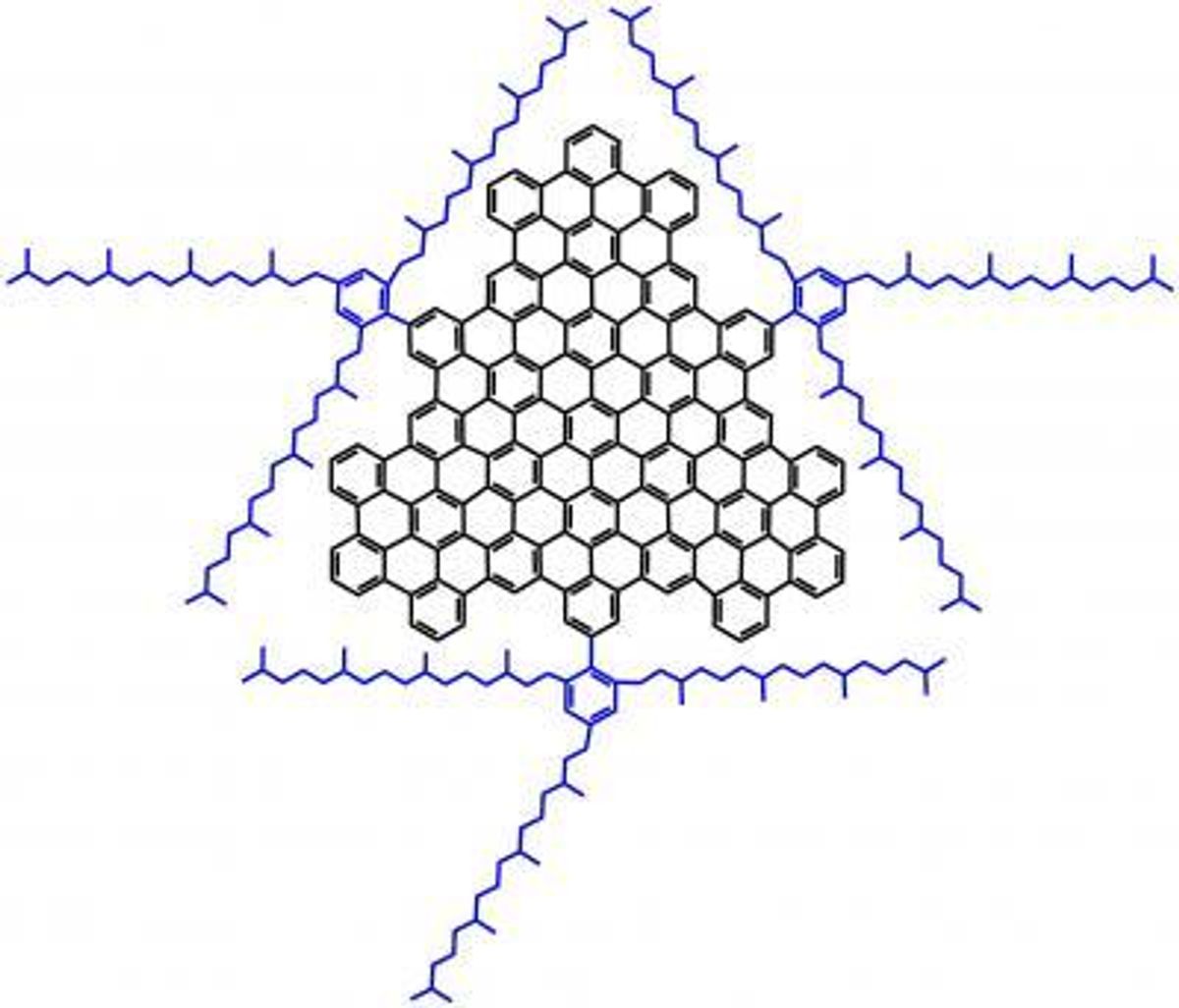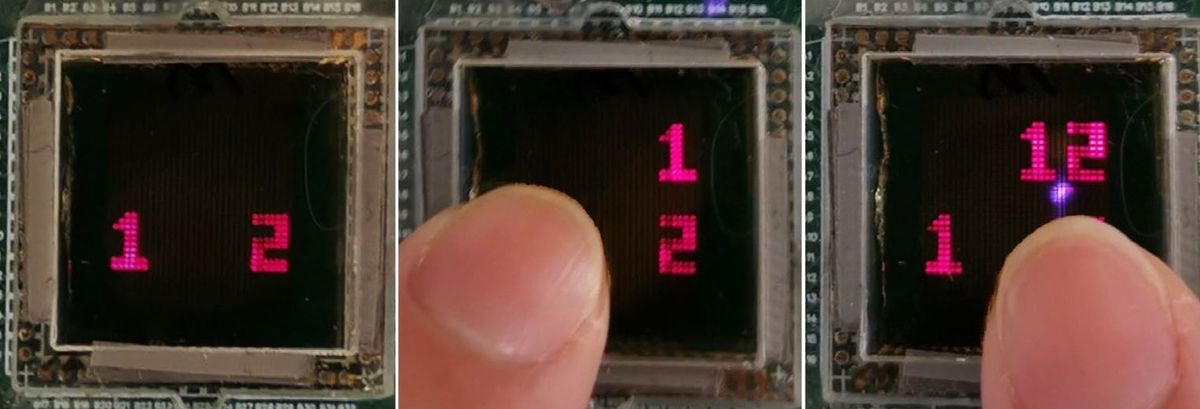The problem to this point, though, has been that sheets of graphene tend to stick to each other easily, and sheets made up of many carbon atoms tend to be difficult to work with. Researchers at Indiana University, however, recently managed to create sheets with 168 atoms that they could keep away from other sheets. They accomplished the feat by adding hydrocarbon "arms" extending at approximately right angles from the edges of the sheet. Two of these arms generally will cover each side of the graphene, preventing other nearby sheets from sticking to it.
Their compound was also highly soluble, an important characteristic if they are to be used in solar cells. The authors wrote that the 168 atoms in their sheets are the most in a soluble graphene sheet to-date. They reported a solubility of up to 30 mg/mL in "various common organic solvents, such as chloroform, tetrahydrofuran, or toluene."
Of course, this isn't the first time that graphene has been touted as a solar cell savior. Even though the new version was able to absorb energy in the range from 200 to 900 nm, turning that energy into electricity isn't an easy process.
"Harvesting energy from the sun is a prerequisite step," said Liang-shi Li, the lead researcher on the project, in a press release. "How to turn the energy into electricity is the next. We think we have a good start."
Image by Liang-shi Li.
Dave Levitan is the science writer for FactCheck.org, where he investigates the false and misleading claims about science that U.S. politicians occasionally make.




